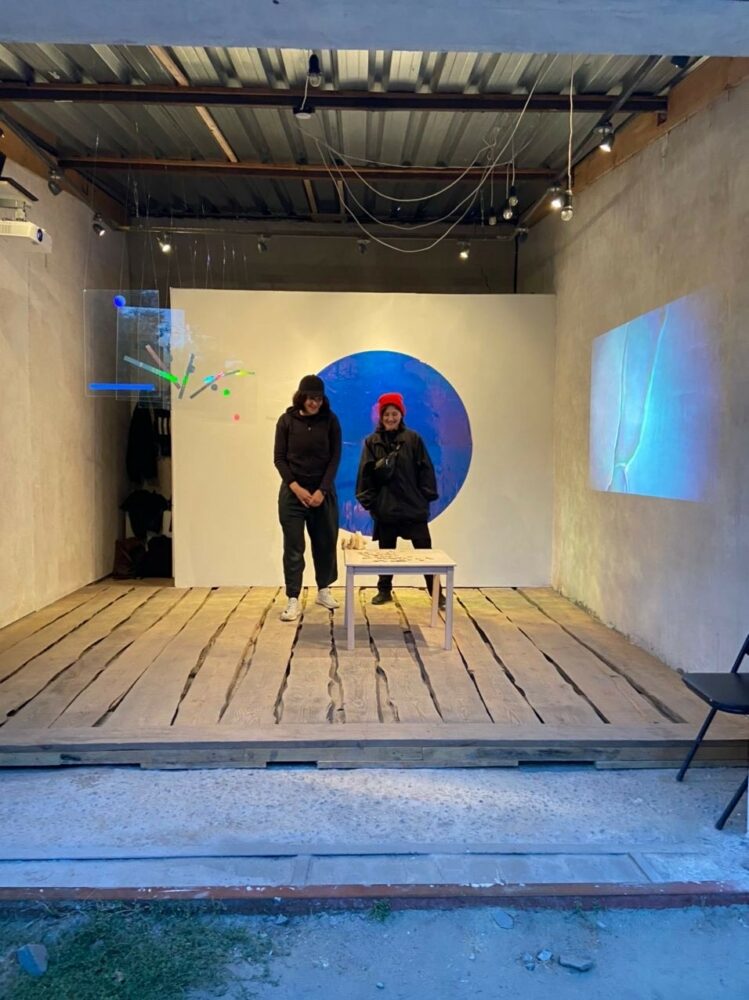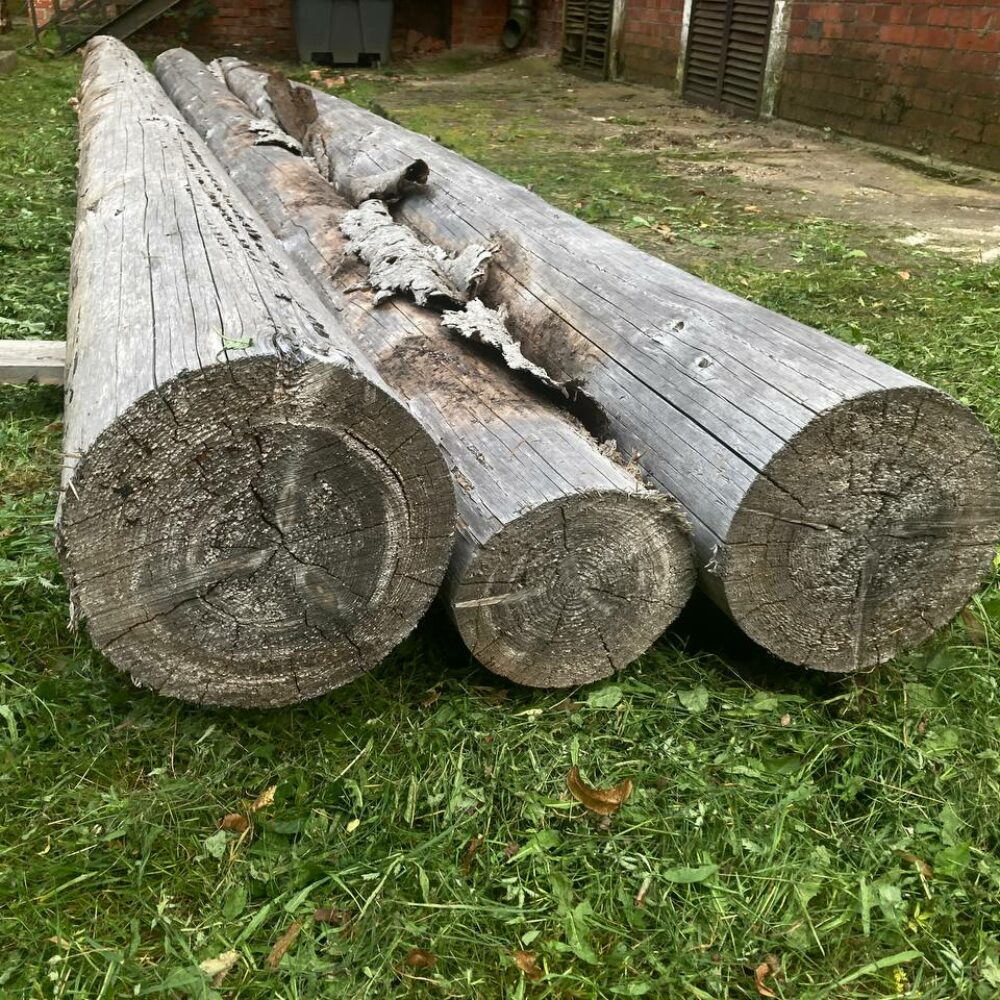Tetiana Pavliuk and Irena Tischenko (Ukraine)
01.09 – 30.09.2024
BIO//
Irena and Tetiana are Ukrainian artists who have been collaborating since 2020. They work with themes of post-totalitarian society, collective memory and urban environment in the mediums of digital photography, video and installation. Together Irena and Tetiana have created several projects as well as solo exhibitions that explore post-totalitarian society. Their favourite and least favourite word is — Anthropocene.
PROJECT//
“I have a word for you, but I can’t say it, so I’ll write it down and set it on fire”
“Narva used to be a transit city, and everything was fine with us — until we fell out with our neighbors,” says the driver who takes me to my place of residence. The city of Narva is located on the border with the russian federation, a country whose name has been written in lowercase in my homeland for almost three years. The full-scale invasion of russia into Ukraine in 2022 has destroyed not only physical objects over a huge part of the territory, but also the very sense of order — and not only among the citizens themselves, but throughout Europe. The war is now happening very close — too close and too tangible. Transnistria, Abkhazia, the invasion of South Ossetia on the eve of the Olympic Games, annexed Crimea, Ukraine — this is an incomplete list of countries that russia has invaded over the past 30 years, and it doesn’t look like it’s going to stop. Who’s next?
It was easy to create the Watchtower project in 2023, sitting under fire in a bomb shelter. The story is clear — Ukraine has been trying to defend off its neighbors for over 300 years. In the times of the Cossacks, a military signaling system was used for this. A network of watchtowers, located in a chain along the border at a distance of maximum visibility from one another — from the fort to the distant cordons — notified the military leaders in the fortress of the approach of the enemy.
It was much more difficult to place the tower in peaceful and quiet Narva, where nothing foreshadowed trouble, except for the immediate proximity to the russian border.
Watchtower. Artist Yuri Zhurka
The project I made is an incomplete, rather symbolic reproduction of the historical Cossack watchtower — on a smaller scale and without platforms with stairs (purely for safety).
Assembled from wooden logs from 6 to 12 meters high, the tower was called “Glyada” (an ukrainian word for seeing) or “Khvigura” (ukr. Figure), stood on hills near the river, burial mounds or other elevations, and consisted of an observation platform at the top and 19 barrels (hollow and with resin) at the foot.
The lookout on the tower, seeing the dust raised by the enemy army, set the entire structure on fire, and his comrades on neighboring towers (the distance between them was 15-20 km) saw the smoke and fire, and they set themselves towers on fire too. Thus, the alarm signal was transmitted from the distant cordons to the main fortress at a distance of up to 100 km — the location of the main military forces — in half an hour. There they had time to raise the gates and bring the main army to readiness.
In modern times, this function is performed by complex technological monitoring systems, but they are powerless against short human memory. Formally, the russian federation declares its neutrality, if not friendliness, but in reality, it never stops looking at its neighbors as inferior people whom they will come to “liberate” if they suddenly need new territory.
The conflict usually begins unnoticed, and the violation of borders by the russian side is denied until the very end. Not everyone can believe that a country that calls itself a “brotherly nation” will soon send planes to bomb peaceful cities. This is facilitated by serious preliminary work with the population — russian-speaking and pro-russian citizens are especially at risk. These same people, warmly welcoming a potential russian invasion, will be the first to be mobilized into the russian army and sent to fight. This picture may seem like an exaggeration, but not for those in whose country this has been happening for the last ten years, and right now, when you are reading this text.
Of course, the absence of a russian-speaking population in Syria, for example, did not save the country from russian bombing. Nor did the lack of a common border with russia save them. But the common russian cultural field creates excellent preconditions for “liberation”. However, if there are not enough people in Estonia willing to participate in the creation of “republics”, as happened in the Ukrainian Lugansk and Donetsk, this will not prevent the russians from launching military operations.
It will look like always — that russia is defending itself from an enemy attack.
[I didn’t find an articles in English which pictured the russian intention to “defended from the Estonia invasion”, but you can see a lot of them at the ru segment of internet, which I recognise as a part of digital propaganda war, aimed at the russian-speaking population.]
Historically, the watchtower was burned down when the enemy was approaching.
I really hope that Estonia will be able to avoid the bloody fate that befell Ukraine, and all the alarming headlines will remain just headlines. But the watchtower stands on the banks of the Narva and looks at russia for this very reason — so that Estonia does not forget what our neighbors are like. Let this tower never be burned down.
Narva 09/30/2024

